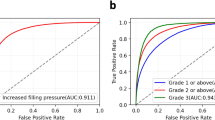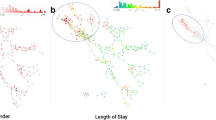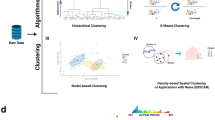Abstract
Artificial intelligence (AI) has potential to improve the accuracy of screening for valvular and congenital heart disease by auscultation. However, despite recent advances in signal processing and classification algorithms focused on heart sounds, clinical acceptance of this technology has been limited, in part due to lack of objective performance data. We hypothesized that a heart murmur detection algorithm could be quantitatively and objectively evaluated by virtual clinical trial. All cases from the Johns Hopkins Cardiac Auscultatory Recording Database (CARD) with either a pathologic murmur, an innocent murmur or no murmur were selected. The test algorithm, developed independently of CARD, analyzed each recording using an automated batch processing protocol. 3180 heart sound recordings from 603 outpatient visits were selected from CARD. Algorithm estimation of heart rate was similar to gold standard. Sensitivity and specificity for detection of pathologic cases were 93% (CI 90–95%) and 81% (CI 75–85%), respectively, with accuracy 88% (CI 85–91%). Performance varied according to algorithm certainty measure, age of patient, heart rate, murmur intensity, location of recording on the chest and pathologic diagnosis. This is the first reported comprehensive and objective evaluation of an AI-based murmur detection algorithm to our knowledge. The test algorithm performed well in this virtual clinical trial. This strategy can be used to efficiently compare performance of other algorithms against the same dataset and improve understanding of the potential clinical usefulness of AI-assisted auscultation.

Similar content being viewed by others
References
Newburger JW, Rosenthal A, Williams RG, Fellows K, Miettinen OS (1983) Noninvasive tests in the initial evaluation of heart murmurs in children. N Engl J Med 308:61–64
Geva T, Hegesh J, Frand M (1988) Reappraisal of the approach to the child with heart murmurs: is echocardiography mandatory? Int J Cardiol 19:107–113
Smythe JF, Teixeira OH, Vlad P, Demers PP, Feldman W (1990) Initial evaluation of heart murmurs: are laboratory tests necessary? Pediatrics 86:497–500
Castello-Herbreteau B, Vaillant MC, Magontier N, Pottier JM, Blond MH, Chantepie A (2000) Diagnostic value of physical examination and electrocardiogram in the initial evaluation of heart murmurs in children. Arch Pediatr 7:1041–1049
Mangione S, Nieman LZ, Gracely E, Kaye D (1993) The teaching and practice of cardiac auscultation during internal medicine and cardiology training. A nationwide survey. Ann Intern Med 119:47–54
Mangione S, Nieman LZ (1997) Cardiac auscultatory skills of internal medicine and family practice trainees. A comparison of diagnostic proficiency. JAMA 278:717–722
Vukanovic-Criley JM, Criley S, Warde CM, Boker JR, Guevara-Matheus L, Churchill WH, Nelson WP, Criley JM (2006) Competency in cardiac examination skills in medical students, trainees, physicians, and faculty: a multicenter study. Arch Intern Med 166:610–616
Vukanovic-Criley JM, Hovanesyan A, Criley SR, Ryan TJ, Plotnick G, Mankowitz K, Conti CR, Criley JM (2010) Confidential testing of cardiac examination competency in cardiology and noncardiology faculty and trainees: a multicenter study. Clin Cardiol 33:738–745
Kumar K, Thompson WR (2013) Evaluation of cardiac auscultation skills in pediatric residents. Clin Pediatr (Phila) 52:66–73
DeGroff CG, Bhatikar S, Hertzberg J, Shandas R, Valdes-Cruz L, Mahajan RL (2001) Artificial neural network-based method of screening heart murmurs in children. Circulation 103:2711–2716
Thompson WR, Hayek CS, Tuchinda C, Telford JK, Lombardo JS (2001) Automated cardiac auscultation for detection of pathologic heart murmurs. Pediatr Cardiol 22:373–379
Watrous RL, Thompson WR, Ackerman SJ (2008) The impact of computer-assisted auscultation on physician referrals of asymptomatic patients with heart murmurs. Clin Cardiol 31:79–83
Pretorius E, Cronje ML, Strydom O (2010) Development of a pediatric cardiac computer aided auscultation decision support system. Conf Proc IEEE Eng Med Biol Soc 2010:6078–6082
Lai LSW, Redington AN, Reinisch AJ, Unterberger MJ, Schriefl AJ (2016) Computerized automatic diagnosis of innocent and pathologic murmurs in pediatrics: a pilot study. Congenit Heart Dis 11:386–395
Thomas JL, Winther S, Wilson RF, Bottcher M (2017) A novel approach to diagnosing coronary artery disease: acoustic detection of coronary turbulence. Int J Cardiovasc Imaging 33:129–136
Tuchinda C, Thompson WR (2001) Cardiac auscultatory recording database: delivering heart sounds through the internet. Proc AMIA Symp 2001:716–720
Hayek CS, Thompson WR, Tuchinda C, Wojcik RA, Lombardo JS (2003) Wavelet processing of systolic murmurs to assist with clinical diagnosis of heart disease. Biomed Instrum Technol 37:263–270
Edwin B, Wilson (1927) Probable Inference, the Law of Succession, and Statistical Inference. J Am Stat Assoc 22:209–212
Leng S, Tan RS, Chai KT, Wang C, Ghista D, Zhong L (2015) The electronic stethoscope. Biomed Eng Online 14:66
Liu C, Springer D, Li Q, Moody B, Juan RA, Chorro FJ, Castells F, Roig JM, Silva I, Johnson AE, Syed Z, Schmidt SE, Papadaniil CD, Hadjileontiadis L, Naseri H, Moukadem A, Dieterlen A, Brandt C, Tang H, Samieinasab M, Samieinasab MR, Sameni R, Mark RG, Clifford GD (2016) An open access database for the evaluation of heart sound algorithms. Physiol Meas 37:2181–2213
Willems JL, Arnaud P, van Bemmel JH, Bourdillon PJ, Brohet C, Dalla Volta S, Andersen JD, Degani R, Denis B, Demeester M (1985) Assessment of the performance of electrocardiographic computer programs with the use of a reference data base. Circulation 71:523–534
Bailey JJ, Berson AS, Garson A, Horan LG, Macfarlane PW, Mortara DW, Zywietz C (1990) Recommendations for standardization and specifications in automated electrocardiography: bandwidth and digital signal processing. A report for health professionals by an ad hoc writing group of the Committee on Electrocardiography and Cardiac Electrophysiology of the Council on Clinical Cardiology. Am Heart Assoc Circ 81:730–739
Sudarshan V, Acharya UR, Ng EY, Meng CS, Tan RS, Ghista DN (2015) Automated identification of infarcted myocardium tissue characterization using ultrasound images: a review. IEEE Rev Biomed Eng 8:86–97
Wu G, Shen D, Sabuncu M (2016) Machine learning and medical imaging. Academic Press, New York, pp 197–212
Acknowledgements
We acknowledge Dhananjay Vaidya, MBBS, PhD, MPH, Johns Hopkins Biostatistics, Epidemiology and Data Management Core for assistance with statistical analysis.
Author information
Authors and Affiliations
Corresponding author
Ethics declarations
Conflict of interest
Andreas J. Reinisch is an employee and owner of CSD Labs. Michael J. Unterberger is an employee of CSD Labs. Andreas J. Schriefl is an employee and owner of CSD Labs. W. Reid Thompson declares no conflict of interest.
Ethical Approval
This article does not contain any studies with human participants or animals performed by any of the authors. The study dataset contained no protected health information; therefore, the study was exempted from Institutional Review Board approval.
Additional information
General Disclosure
The algorithm discussed in this manuscript was developed by CSD Labs GmbH, Austria (http://www.emurmur.com) and is investigational, not cleared by the FDA, and not available for sale in the U.S.
Rights and permissions
About this article
Cite this article
Thompson, W.R., Reinisch, A.J., Unterberger, M.J. et al. Artificial Intelligence-Assisted Auscultation of Heart Murmurs: Validation by Virtual Clinical Trial. Pediatr Cardiol 40, 623–629 (2019). https://doi.org/10.1007/s00246-018-2036-z
Received:
Accepted:
Published:
Issue Date:
DOI: https://doi.org/10.1007/s00246-018-2036-z




